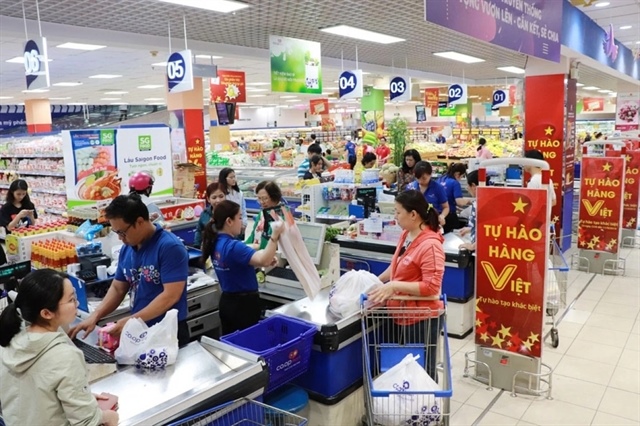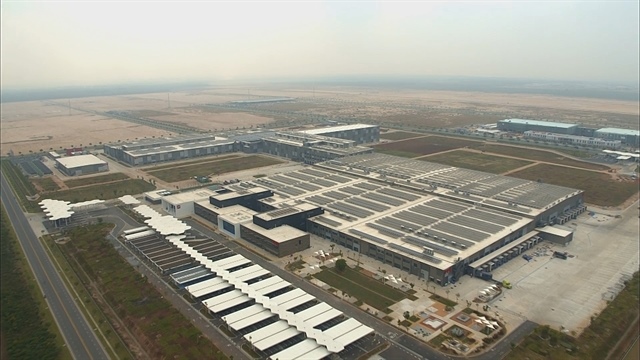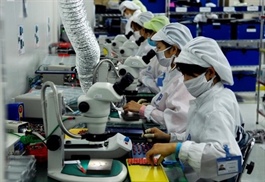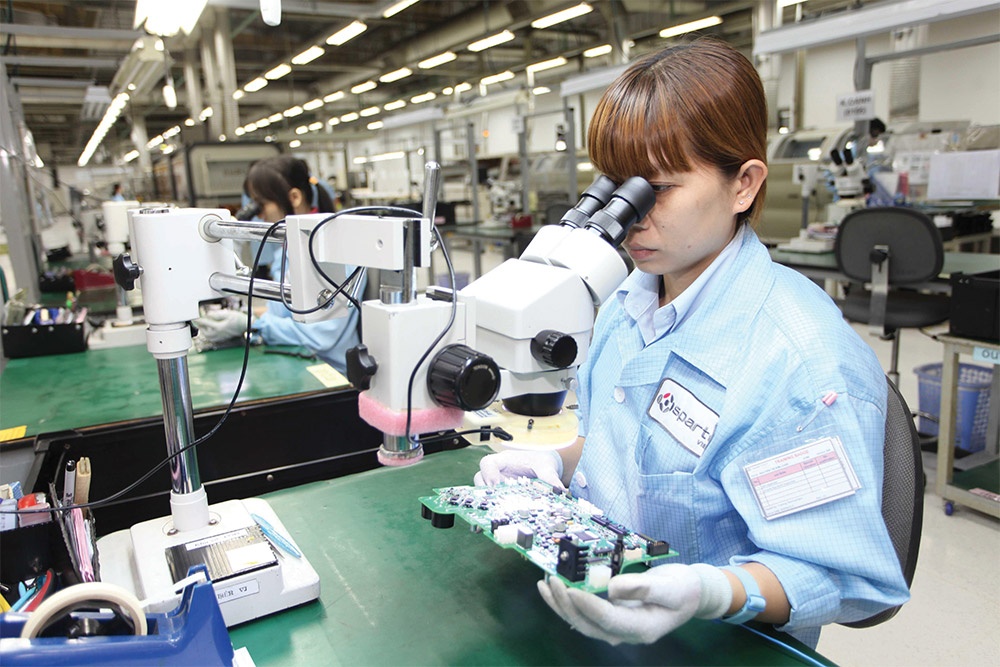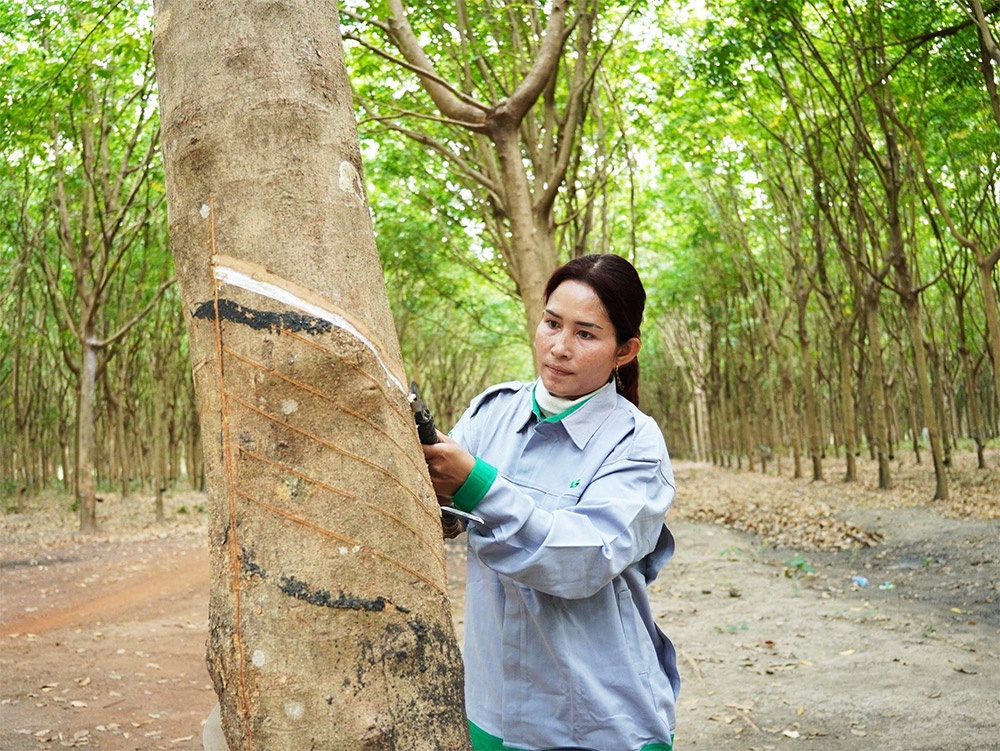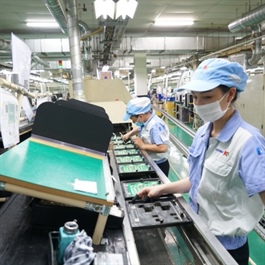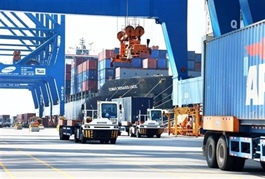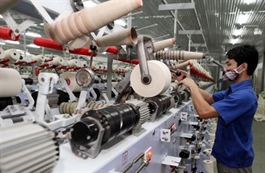Circular agro-economy taking flight
Circular agro-economy taking flight
The Vietnamese agro-forestry-fishery sector is building its own circular economy through enhancing international cooperation and multi-sectoral coordination.

After the prime minister approved a hallmark project on development and application of science and technology transfer to accelerate circular economy in agriculture up to 2030 last month, the Ministry of Agriculture and Rural Development (MARD) last week began to materialise the project, which will have huge impacts on the sector.
The project will focus on research, technology application, market development, policy frameworks, international cooperation, and communication related to circular agriculture.
Deputy Minister of Agriculture and Rural Development Phung Duc Tien emphasised at last week’s policy dialogue in Hanoi the importance of strengthening multilateral international cooperation and multi-sectoral coordination.
“Based on the principles of strengthening multilateral international cooperation and multi-sectoral coordination, we call upon the international community, ministries, and agencies from central to grassroots levels and the private sector to collaborate in supporting the agricultural sector to achieve goals and tasks outlined in the project,” Tien said.
In line with Vietnam’s commitment to achieving net-zero emissions by 2050, the agro-forestry-fishery sector has been tasked with implementing solutions to develop a circular economy. This approach aims to recycle all products and materials to protect the environment and reduce emissions.
Tien highlighted the agricultural sector’s role as a key pillar of the economy, ensuring food security, contributing to economic balance, and maintaining macroeconomic stability.
Last year, the sector achieved a total export turnover of $53.01 billion, resulting in a trade surplus of $12.07 billion, marking a 43.7 oer cent increase on-year and accounting for 42.5 per cent of the economy’s total trade surplus. For the first half of this year, the sector recorded $29.2 billion in exports, a 19 per cent increase on-year.
This year, the sector is projected to grow by 3-3.5 per cent, with total export and import turnover expected to reach $54-55 billion.
Tien said that developing a circular economy in agriculture is not only a requirement but also a solution for sustainable and effective agricultural development, aligning with international commitments and national goals on green and sustainable development.
He underscored the vital role of circular agriculture in delivering economic, social, and environmental benefits through its models.
“Climate change, natural resource scarcity, environmental degradation, diseases, and other factors are urging countries to rethink their development and production approaches, guided by the principle that ‘everything serves as input for something else’,” Tien said.
“In Vietnam, many enterprises have effectively implemented their own circular economy models.”
In an example, TH Group has adopted a comprehensive closed-loop production process known as Towards Net-Zero, ensuring sustainability from meadow to milk glass. This approach supports the government’s efforts to combat climate change and achieve sustainable development goals.
“TH consistently applies the green and circular economy model, focusing on sustainable development across all units, particularly in reducing and neutralising carbon emissions,” said a TH representative.
Operating a 1.2 billion litre high-tech dairy farming and processing complex in Nghe An’s Nghia Dan district, TH Group produces two lines of organic fertilisers: powder and tablet. This move addresses the high cost of imported tablet fertilisers from Japan, Belgium, and the Netherlands in the Vietnamese market.
TH Group also manages waste from its production processes, classifying and handing over hazardous waste storage areas for proper disposal.
According to MARD statistics, the agricultural sector generates approximately 156.8 million tonnes of waste and by-products annually. This includes 88.9 million tonnes from crop production, 61.4 million tonnes from livestock and poultry farming, 5.5 million tonnes from forestry, and nearly one million tonnes from fisheries. The rice sector alone produces 47 million tonnes of straw, 8.6 million tonnes of rice husk ash, and 5.6 million tonnes of bran annually.
In the fisheries sector, nearly one million tonnes of by-products remain untreated or underutilised.
Tong Xuan Chinh, deputy director of the MARD’s Department of Livestock Production, has highlighted various solutions for processing seafood by-products, such as extracting biological compounds for industries like cosmetics and pharmaceuticals - for example, chitin and chitosan from shrimp shells, and collagen and gelatin from catfish skin.
“However, the seafood by-product processing sector generated only $275 million in 2020. With advanced technology, we could potentially earn $4-5 billion annually from these resources,” Chinh said.


